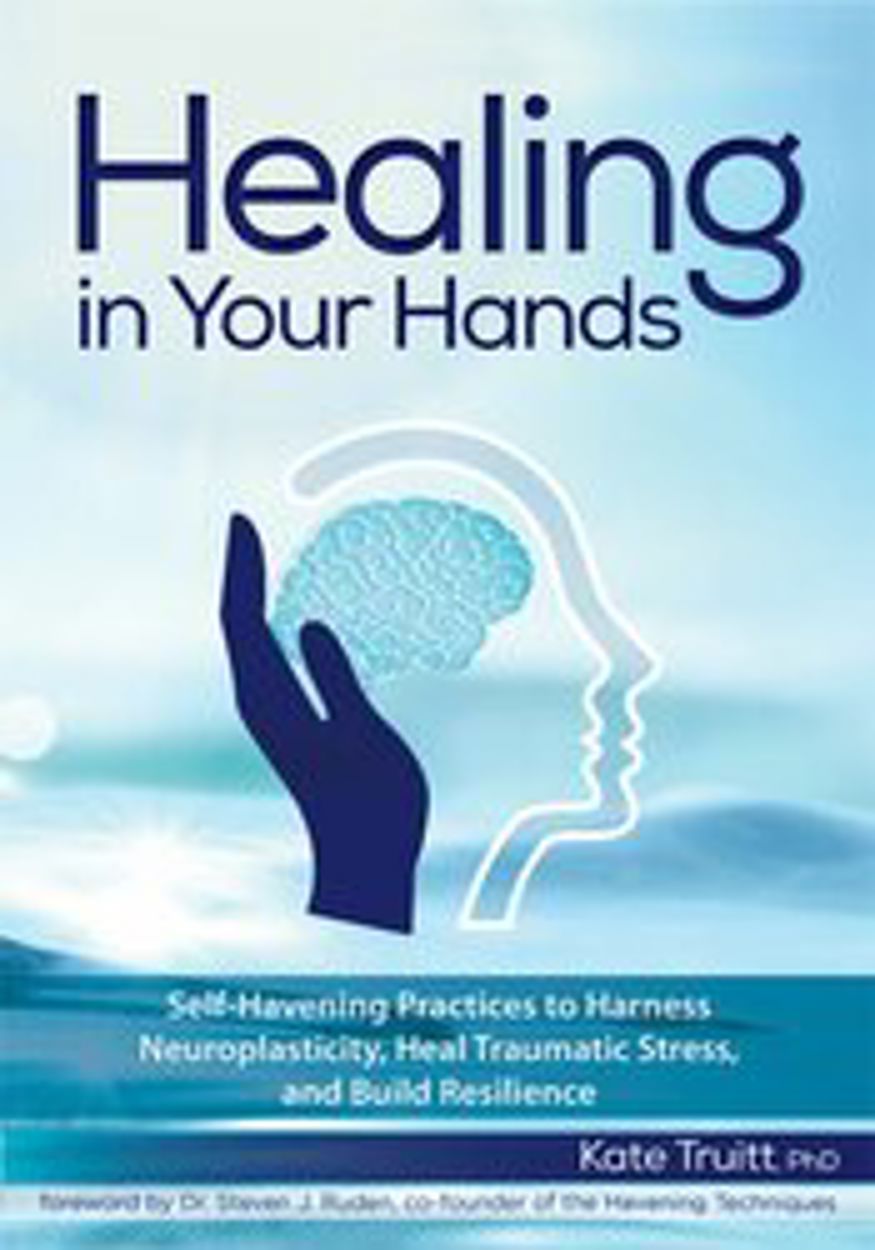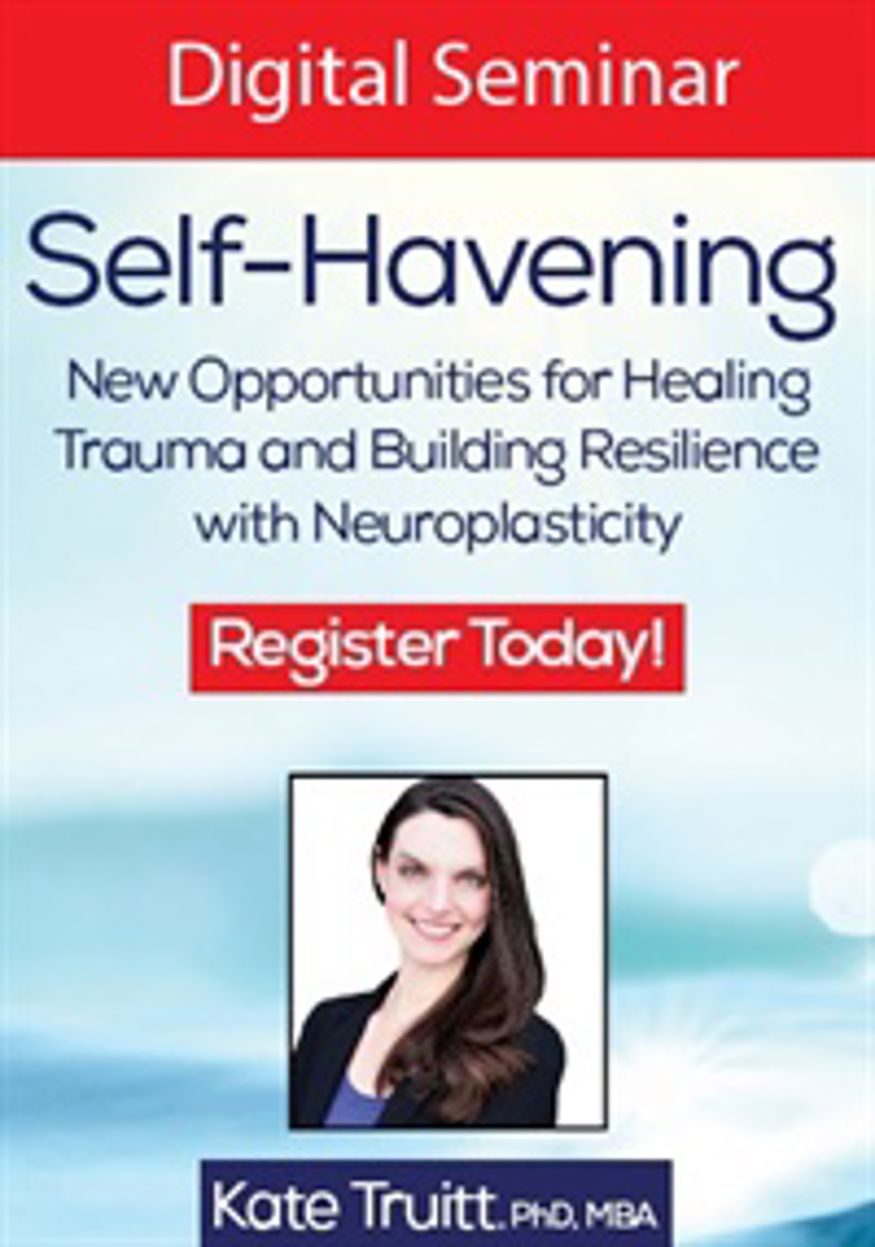Sigh Breath Exercise and Havening Touch for Trauma Treatment

Thanks to deeper understanding from neuroscience, we are seeing the efficacy of integrating self-applied touch and breathing exercises into the work of psychotherapy. Dr. Kate Truitt, Havening Techniques Certified Trainer, applied neuroscientist, and author of Healing in Your Hands: Self-Havening Practices to Harness Neuroplasticity, Heal Traumatic Stress, and Build Resilience, shares a highly effective and easy-to-use exercise that will transform your approach to trauma treatment through breathing and touch.
In this video, Dr. Truitt walks you through the sigh breath exercise which is a simple modified CPR (Creating Personal Resiliency) for the amygdala that utilizes a “breath in, breath in, breath out” experience plus a havening touch. The idea is that this creates a new sense of psychological safety for the mind and body system that allows you to start to intentionally shift and deepen awareness without accidentally creating increased anxiety.
See how easy it is to utilize breathing and the havening touch in this brief video:
In this video, Dr. Truitt walks you through the sigh breath exercise which is a simple modified CPR (Creating Personal Resiliency) for the amygdala that utilizes a “breath in, breath in, breath out” experience plus a havening touch. The idea is that this creates a new sense of psychological safety for the mind and body system that allows you to start to intentionally shift and deepen awareness without accidentally creating increased anxiety.
See how easy it is to utilize breathing and the havening touch in this brief video:
Healing in Your Hands: Self-Havening Practices to Harness Neuroplasticity, Heal Traumatic Stress, and Build Resilience

The power to heal the wounds of your past, create your present, and build your future is in your own hands.
Written by Dr. Kate Truitt, a psychologist, neuroscientist, and trauma expert, Healing in Your Hands is the first book of its kind to integrate the neuroscience of trauma with cutting-edge research on self-havening – a groundbreaking technique that draws on the power of mindful touch to heal even the most profound traumatic stress. It weaves together powerful client stories, insights from the field of neuroscience, and personalized havening practices to create a complete self-healing program that anyone can use.
Written by Dr. Kate Truitt, a psychologist, neuroscientist, and trauma expert, Healing in Your Hands is the first book of its kind to integrate the neuroscience of trauma with cutting-edge research on self-havening – a groundbreaking technique that draws on the power of mindful touch to heal even the most profound traumatic stress. It weaves together powerful client stories, insights from the field of neuroscience, and personalized havening practices to create a complete self-healing program that anyone can use.
Self-Havening: New Opportunities for Healing Trauma and Building Resilience with Neuroplasticity

As clinicians, you hold space for the impact of trauma and chronic stress in your clients' lives on a daily basis. You see how the wounds of the past show up in the present, permeating their lives with anxious habits, rumination, self-criticism, intrusive thoughts, depression, and more.
But did you know the brain holds within itself the innate capacity to heal, and that your clients can literally take their healing into their own hands?
Watch Dr. Kate Truitt in this 3-hour recording to learn about the Havening Techniques and other resilience-building strategies that clients can utilize anytime, anywhere, to soothe mental and emotional distress, create space between impulses and action, and begin to regulate the brain’s response to stress.
Don’t miss this experiential training where you’ll learn the why and neurobiological how of self-havening, along with clinical tools to take back to your practice right away.
But did you know the brain holds within itself the innate capacity to heal, and that your clients can literally take their healing into their own hands?
Watch Dr. Kate Truitt in this 3-hour recording to learn about the Havening Techniques and other resilience-building strategies that clients can utilize anytime, anywhere, to soothe mental and emotional distress, create space between impulses and action, and begin to regulate the brain’s response to stress.
Don’t miss this experiential training where you’ll learn the why and neurobiological how of self-havening, along with clinical tools to take back to your practice right away.





